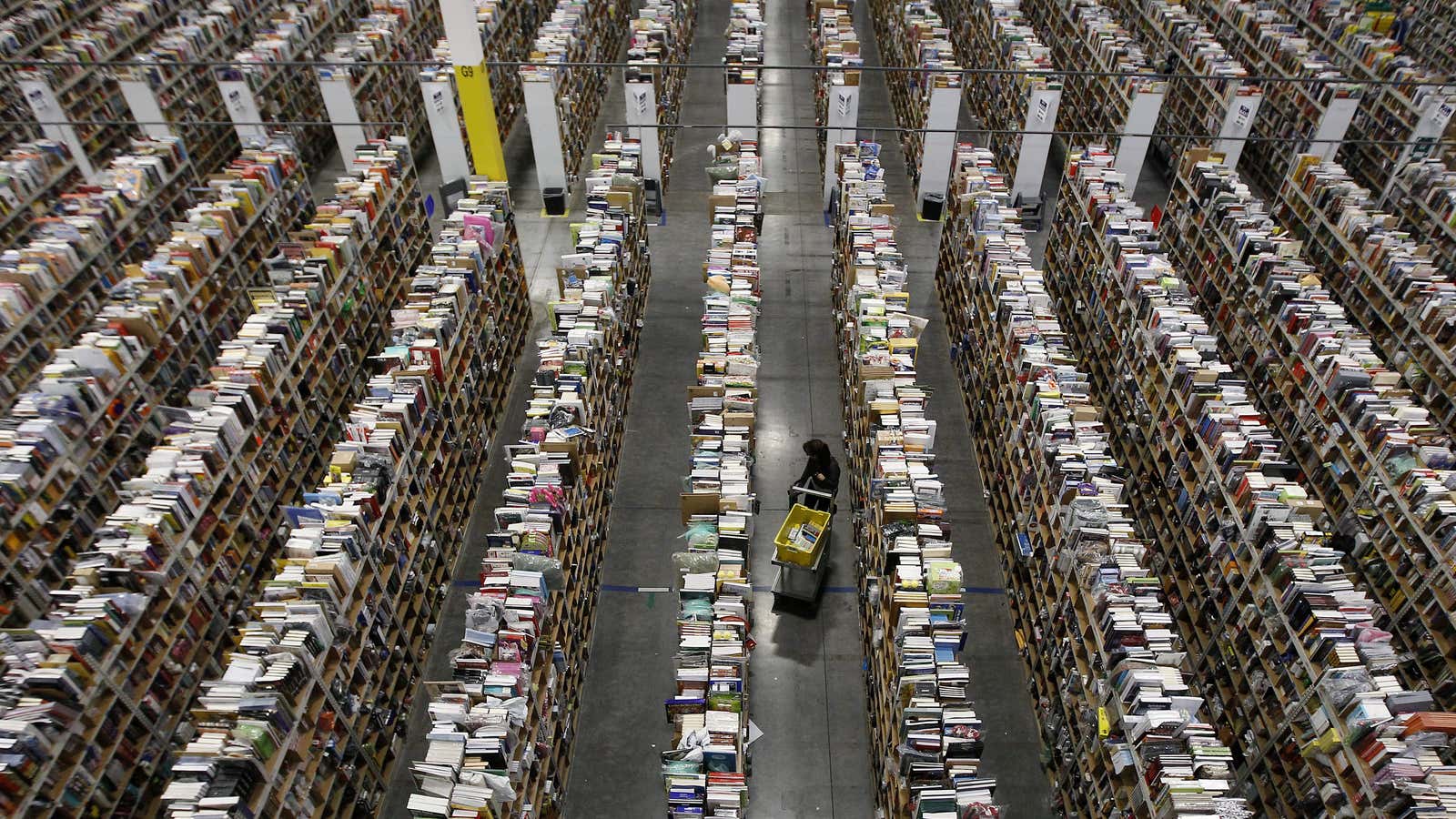Amazon is concerned about its workforce. The second largest private employer in the US fears it could run out of people to employ in its American warehouses within two years because staff keep quitting at astonishing rates: One analysis found the average tenure of Amazon warehouse employees to be just 8 months, meaning each fulfillment center’s staff turns over 150% every year, twice the retail industry’s average rate.
An Amazon spokesperson told Quartz that the internal research about hiring, written in 2021, “doesn’t represent the actual situation.” But if that labor shortage does come to pass, the company now has some robots to help out.
Amazon’s new robot
Amazon just unveiled the Proteus, billed as its “first fully autonomous mobile robot.” It’s essentially a Roomba that can scooch under large containers full of packages like a forklift, lift up the goods, and carry them to their destination like a human worker might.
In a press release, Amazon said that when the company first bought the robotic fulfillment company Kiva Systems for $775 million in 2012, “speculation was rampant that Amazon was replacing people with robots.” The company, clearly defensive about its role in creating and destroying jobs, says that since 2012 it has amassed “520,000 robotic drive units” while adding “over a million jobs.” The move into robotics was “about people and technology working safely and harmoniously together.”
Fair enough! Displacing workers isn’t necessary if everyone quits first. Robots like Proteus might be necessary to supplant a looming worker shortage, making the workplace safer, and less strenuous in the process. Instead of lifting heavy objects, Amazon wrote, the robots will let people “focus on more rewarding work.”
